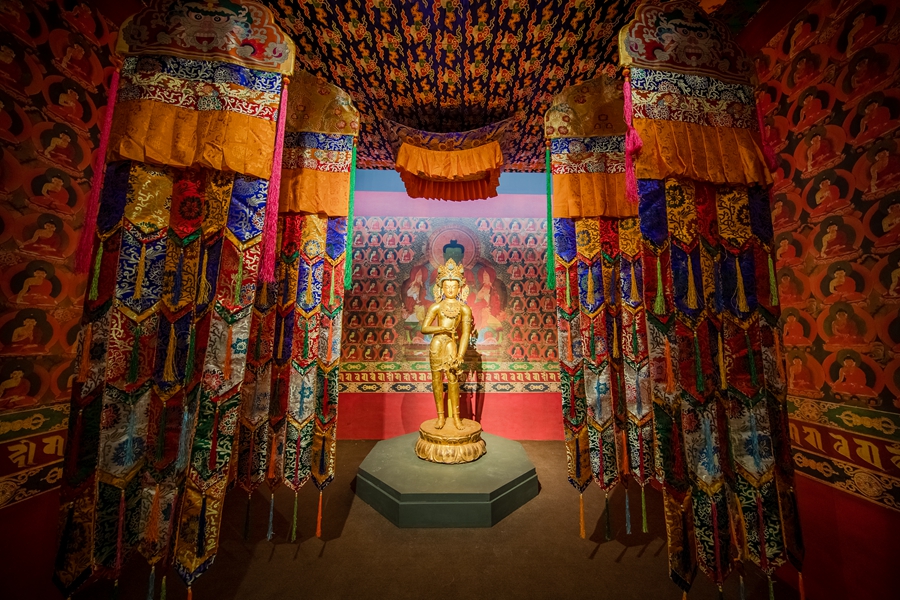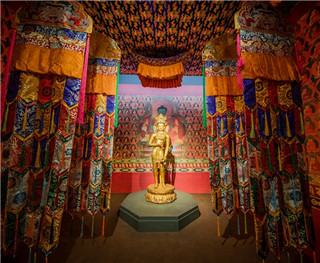Nurturing a spiritual connection
 0 Comment(s)
0 Comment(s) Print
Print E-mail China Daily, December 19, 2019
E-mail China Daily, December 19, 2019

Centuries of exchanges between the Panchen Lama and the central government are highlighted in a new Palace Museum exhibition.
They may be nearly 4,000 kilometers apart, yet the Forbidden City and the Tashi Lhunpo Monastery are two key landmarks that have enjoyed historically close connections.
The two places, while separated by a vast distance, jointly tell the centuries-old story of the close connections between the Chinese central government and Tibet.
The Fortune and Longevity of Sumeru: An Encounter Between the Tashi Lhunpo Monastery and the Palace Museum, an exhibition at the Palace Museum which opened to the public on Dec 10, introduces people to the splendid fine arts and rich cultural artifacts from the monastery.
Just as the Forbidden City was China's imperial palace from 1420 to 1911, the Tashi Lhunpo Monastery in Shigatse, Tibet autonomous region, was constructed in the 15th century and is the seat of the Panchen Lama, a Tibetan spiritual leader.
The exhibition held in the Meridian Gate Galleries of the Palace Museum showcases 280 cultural relics, 77 of which come from the monastery while the rest are curated from the permanent collection of the museum. It will run through February.
According to Wang Xudong, director of the Palace Museum, it is the first time since the Forbidden City became a public museum in 1925 that it has showcased cultural relics pertaining to the Panchen Lama.
"It's also the first time these relics from the Tashi Lhunpo Monastery have left the site to be shown to the public," Wang says.
"We also have more than 10 Buddhist temples in the Forbidden City," he says. "And tens of thousands of Tibetan Buddhist statues and other related religious artifacts are housed in our museum."
Some of these statues were made by the imperial household's workshops of the Qing Dynasty (1644-1911), but many were precious artifacts that were paid as tributes by the Tibetan and Mongolian ethnic groups.
"They are symbols of communication among different ethnic groups," Wang says.





Go to Forum >>0 Comment(s)